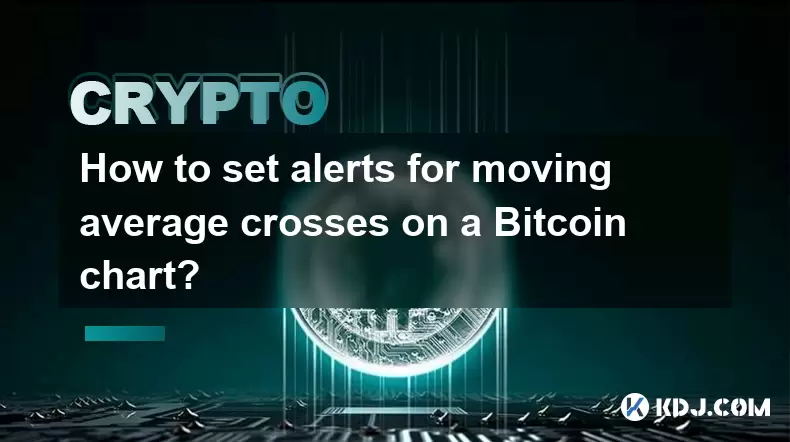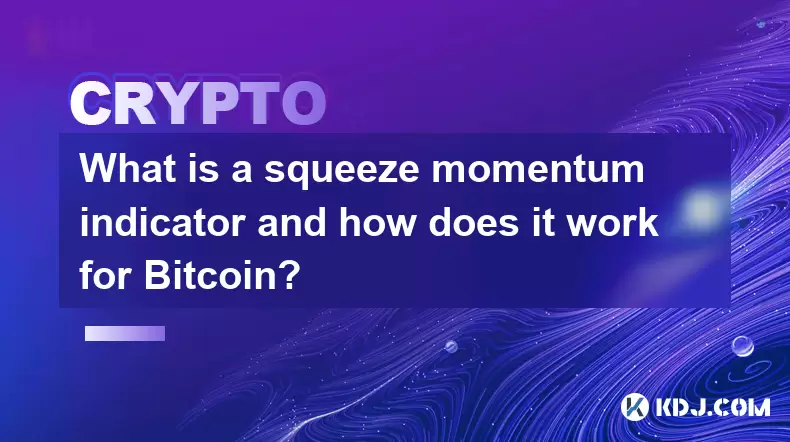-
 Bitcoin
Bitcoin $108,017.2353
-0.81% -
 Ethereum
Ethereum $2,512.4118
-1.58% -
 Tether USDt
Tether USDt $1.0002
-0.03% -
 XRP
XRP $2.2174
-1.03% -
 BNB
BNB $654.8304
-0.79% -
 Solana
Solana $147.9384
-1.76% -
 USDC
USDC $1.0000
-0.01% -
 TRON
TRON $0.2841
-0.76% -
 Dogecoin
Dogecoin $0.1636
-2.09% -
 Cardano
Cardano $0.5726
-1.72% -
 Hyperliquid
Hyperliquid $39.1934
1.09% -
 Sui
Sui $2.9091
-0.59% -
 Bitcoin Cash
Bitcoin Cash $482.1305
0.00% -
 Chainlink
Chainlink $13.1729
-1.54% -
 UNUS SED LEO
UNUS SED LEO $9.0243
-0.18% -
 Avalanche
Avalanche $17.8018
-1.90% -
 Stellar
Stellar $0.2363
-1.69% -
 Toncoin
Toncoin $2.7388
-3.03% -
 Shiba Inu
Shiba Inu $0.0...01141
-1.71% -
 Litecoin
Litecoin $86.3646
-1.98% -
 Hedera
Hedera $0.1546
-0.80% -
 Monero
Monero $311.8554
-1.96% -
 Dai
Dai $1.0000
-0.01% -
 Polkadot
Polkadot $3.3473
-2.69% -
 Ethena USDe
Ethena USDe $1.0001
-0.01% -
 Bitget Token
Bitget Token $4.3982
-1.56% -
 Uniswap
Uniswap $6.9541
-5.35% -
 Aave
Aave $271.7716
0.96% -
 Pepe
Pepe $0.0...09662
-1.44% -
 Pi
Pi $0.4609
-4.93%
How to store Bitcoin after buying it? Which is better, a cold wallet or a hot wallet?
Securely store Bitcoin with cold wallets like Ledger Nano S for high security, or hot wallets like Electrum for convenience, based on your needs.
Apr 29, 2025 at 02:56 am

Storing Bitcoin securely after purchasing it is crucial for safeguarding your investment. The choice between a cold wallet and a hot wallet depends on your specific needs, such as security, convenience, and frequency of transactions. In this article, we will explore the different methods to store Bitcoin and help you decide which type of wallet is better suited for your needs.
Understanding Bitcoin Wallets
A Bitcoin wallet is a software program or physical device that allows you to store, send, and receive Bitcoin. There are two primary types of wallets: cold wallets and hot wallets. Cold wallets are offline storage solutions, while hot wallets are connected to the internet. Understanding the differences between these two types of wallets is essential for making an informed decision on how to store your Bitcoin.
Cold Wallets: Enhanced Security
Cold wallets are considered the most secure option for storing Bitcoin because they are not connected to the internet, making them less susceptible to hacking attempts. There are several types of cold wallets, including hardware wallets and paper wallets.
Hardware Wallets
Hardware wallets are physical devices designed to store your Bitcoin offline. They are small, portable, and easy to use. Some popular hardware wallets include Ledger Nano S, Trezor, and KeepKey. Here's how to set up and use a hardware wallet:
- Choose a reputable hardware wallet: Research and select a hardware wallet from a trusted manufacturer.
- Purchase the wallet: Buy the hardware wallet from the official website or authorized resellers.
- Set up the wallet: Follow the manufacturer's instructions to set up the wallet. This usually involves connecting the device to your computer and installing the necessary software.
- Create a new wallet or restore an existing one: You can either create a new wallet or restore an existing one using your recovery seed.
- Transfer your Bitcoin: Send your Bitcoin from your exchange or hot wallet to your hardware wallet address.
Paper Wallets
A paper wallet is another type of cold wallet where your Bitcoin private keys are printed on a piece of paper. Here's how to create and use a paper wallet:
- Generate a paper wallet: Use a reputable online generator like BitcoinPaperWallet to create a paper wallet. Ensure you are using a secure and offline computer to avoid potential security risks.
- Print the wallet: Print the generated wallet on a high-quality printer, ensuring the private keys are legible.
- Store the wallet securely: Keep the paper wallet in a safe place, such as a fireproof safe or a secure deposit box.
- Transfer your Bitcoin: Send your Bitcoin to the public address on your paper wallet.
Hot Wallets: Convenience and Accessibility
Hot wallets are connected to the internet, making them more convenient for frequent transactions. However, this connectivity also makes them more vulnerable to hacking. Hot wallets can be further categorized into desktop wallets, mobile wallets, and web wallets.
Desktop Wallets
Desktop wallets are software programs installed on your computer. They offer a good balance between security and convenience. Some popular desktop wallets include Electrum and Bitcoin Core. Here's how to set up and use a desktop wallet:
- Download the wallet software: Visit the official website of the wallet you've chosen and download the software.
- Install the wallet: Follow the installation instructions to set up the wallet on your computer.
- Create a new wallet or restore an existing one: You can either create a new wallet or restore an existing one using your recovery seed.
- Transfer your Bitcoin: Send your Bitcoin from your exchange or another wallet to your desktop wallet address.
Mobile Wallets
Mobile wallets are apps installed on your smartphone, offering high convenience for on-the-go transactions. Some popular mobile wallets include Mycelium and BRD. Here's how to set up and use a mobile wallet:
- Download the wallet app: Visit the app store on your smartphone and download the wallet app.
- Install the app: Follow the installation instructions to set up the wallet on your phone.
- Create a new wallet or restore an existing one: You can either create a new wallet or restore an existing one using your recovery seed.
- Transfer your Bitcoin: Send your Bitcoin from your exchange or another wallet to your mobile wallet address.
Web Wallets
Web wallets are accessible through a web browser, making them the most convenient option for quick transactions. However, they are also the least secure due to their constant internet connection. Some popular web wallets include Blockchain.com and Coinbase. Here's how to set up and use a web wallet:
- Sign up for an account: Visit the website of the web wallet you've chosen and create an account.
- Verify your identity: Complete any necessary identity verification steps required by the wallet provider.
- Create a new wallet or restore an existing one: You can either create a new wallet or restore an existing one using your recovery seed.
- Transfer your Bitcoin: Send your Bitcoin from your exchange or another wallet to your web wallet address.
Choosing Between Cold and Hot Wallets
The decision between a cold wallet and a hot wallet depends on your specific needs and priorities. If security is your top priority, a cold wallet, such as a hardware or paper wallet, is the best choice. Cold wallets keep your Bitcoin offline, significantly reducing the risk of hacking.
On the other hand, if convenience and accessibility are more important to you, a hot wallet, such as a desktop, mobile, or web wallet, might be more suitable. Hot wallets allow for quick and easy transactions, making them ideal for those who frequently buy, sell, or trade Bitcoin.
Balancing Security and Convenience
For many Bitcoin users, the best approach is to use a combination of both cold and hot wallets. You can store the majority of your Bitcoin in a cold wallet for long-term storage and security, while keeping a smaller amount in a hot wallet for everyday transactions. This strategy allows you to balance the benefits of both types of wallets.
Frequently Asked Questions
Q1: Can I use multiple wallets to store my Bitcoin?
Yes, you can use multiple wallets to store your Bitcoin. Many users find it beneficial to use a combination of cold and hot wallets to balance security and convenience.
Q2: How can I recover my Bitcoin if I lose access to my wallet?
If you lose access to your wallet, you can recover your Bitcoin using your recovery seed or private keys. It's crucial to store these securely and keep them confidential.
Q3: Is it safe to store Bitcoin on an exchange?
Storing Bitcoin on an exchange is generally less secure than using a personal wallet. Exchanges are more vulnerable to hacking, so it's recommended to transfer your Bitcoin to a personal wallet as soon as possible after purchase.
Q4: Can I convert my Bitcoin to other cryptocurrencies within my wallet?
Some wallets support the conversion of Bitcoin to other cryptocurrencies directly within the wallet. However, this feature depends on the specific wallet you are using, so it's important to check the wallet's capabilities before choosing one.
Disclaimer:info@kdj.com
The information provided is not trading advice. kdj.com does not assume any responsibility for any investments made based on the information provided in this article. Cryptocurrencies are highly volatile and it is highly recommended that you invest with caution after thorough research!
If you believe that the content used on this website infringes your copyright, please contact us immediately (info@kdj.com) and we will delete it promptly.
- Bitcoin, Kiyosaki, and Acquisition: A Perfect Storm?
- 2025-07-05 22:35:14
- Cardano vs. Solana: The $500 Dream and a Payments Disruptor
- 2025-07-05 22:50:13
- Subway Surfers on PC: Level Up Your Experience, No Train Ticket Needed!
- 2025-07-05 22:35:14
- Ray Dalio, Bitcoin, and Disruptions: Navigating the Future of Finance
- 2025-07-05 23:10:13
- Yu Darvish's Padres Return: A Coin Flip?
- 2025-07-05 22:50:13
- Undead Blocks Rises Again: Avalanche Blockchain, Blackhole Partnership, and a Roadmap to 2026
- 2025-07-05 22:55:12
Related knowledge

What is the Woodies CCI indicator and can it be used for Bitcoin?
Jul 04,2025 at 05:14pm
Understanding the Woodies CCI IndicatorThe Woodies CCI indicator is a variation of the traditional Commodity Channel Index (CCI), which was originally developed by Donald Lambert. The standard CCI measures the current price level relative to an average price over a given period, typically 14. However, the Woodies version modifies this calculation to mak...

How to use indicators to trade the opening range breakout for Bitcoin CME futures?
Jul 05,2025 at 07:35pm
What Is the Opening Range Breakout Strategy?The opening range breakout (ORB) strategy is a popular trading technique used in both traditional markets and cryptocurrency futures, particularly for Bitcoin on the CME. This method involves identifying a specific price range formed during the early phase of a trading session and then taking positions when th...

What does a bearish cross on the Stochastic RSI mean for Bitcoin?
Jul 05,2025 at 07:18pm
Understanding the Stochastic RSI IndicatorThe Stochastic RSI (Relative Strength Index) is a momentum oscillator used in technical analysis to identify overbought or oversold conditions in an asset's price. It combines two well-known indicators — the RSI and the Stochastic Oscillator — to provide more nuanced signals than either could alone. The Stochast...

How to interpret the interaction between Bitcoin's price and the Ichimoku baseline (Kijun-sen)?
Jul 05,2025 at 11:42pm
Understanding the Ichimoku Baseline (Kijun-sen) in Technical AnalysisThe Ichimoku Cloud, also known as Ichimoku Kinko Hyo, is a comprehensive technical analysis tool that provides insights into momentum, trend direction, and potential support/resistance levels. Within this system, the Kijun-sen, or baseline, plays a crucial role. It is calculated by ave...

How to set alerts for moving average crosses on a Bitcoin chart?
Jul 05,2025 at 09:21pm
Understanding Moving Average Crosses in Bitcoin TradingMoving average crosses are one of the most commonly used technical indicators among cryptocurrency traders. In the context of Bitcoin, these signals help identify potential trend reversals or confirm ongoing trends. A moving average cross occurs when a short-term moving average (e.g., 9-day EMA) int...

What is a squeeze momentum indicator and how does it work for Bitcoin?
Jul 05,2025 at 07:32pm
Understanding the Squeeze Momentum IndicatorThe Squeeze Momentum Indicator is a technical analysis tool used by traders to identify potential breakout opportunities in financial markets, including cryptocurrencies like Bitcoin. It was developed by John Carter and is widely used among active traders who seek to capture volatility expansions after periods...

What is the Woodies CCI indicator and can it be used for Bitcoin?
Jul 04,2025 at 05:14pm
Understanding the Woodies CCI IndicatorThe Woodies CCI indicator is a variation of the traditional Commodity Channel Index (CCI), which was originally developed by Donald Lambert. The standard CCI measures the current price level relative to an average price over a given period, typically 14. However, the Woodies version modifies this calculation to mak...

How to use indicators to trade the opening range breakout for Bitcoin CME futures?
Jul 05,2025 at 07:35pm
What Is the Opening Range Breakout Strategy?The opening range breakout (ORB) strategy is a popular trading technique used in both traditional markets and cryptocurrency futures, particularly for Bitcoin on the CME. This method involves identifying a specific price range formed during the early phase of a trading session and then taking positions when th...

What does a bearish cross on the Stochastic RSI mean for Bitcoin?
Jul 05,2025 at 07:18pm
Understanding the Stochastic RSI IndicatorThe Stochastic RSI (Relative Strength Index) is a momentum oscillator used in technical analysis to identify overbought or oversold conditions in an asset's price. It combines two well-known indicators — the RSI and the Stochastic Oscillator — to provide more nuanced signals than either could alone. The Stochast...

How to interpret the interaction between Bitcoin's price and the Ichimoku baseline (Kijun-sen)?
Jul 05,2025 at 11:42pm
Understanding the Ichimoku Baseline (Kijun-sen) in Technical AnalysisThe Ichimoku Cloud, also known as Ichimoku Kinko Hyo, is a comprehensive technical analysis tool that provides insights into momentum, trend direction, and potential support/resistance levels. Within this system, the Kijun-sen, or baseline, plays a crucial role. It is calculated by ave...

How to set alerts for moving average crosses on a Bitcoin chart?
Jul 05,2025 at 09:21pm
Understanding Moving Average Crosses in Bitcoin TradingMoving average crosses are one of the most commonly used technical indicators among cryptocurrency traders. In the context of Bitcoin, these signals help identify potential trend reversals or confirm ongoing trends. A moving average cross occurs when a short-term moving average (e.g., 9-day EMA) int...

What is a squeeze momentum indicator and how does it work for Bitcoin?
Jul 05,2025 at 07:32pm
Understanding the Squeeze Momentum IndicatorThe Squeeze Momentum Indicator is a technical analysis tool used by traders to identify potential breakout opportunities in financial markets, including cryptocurrencies like Bitcoin. It was developed by John Carter and is widely used among active traders who seek to capture volatility expansions after periods...
See all articles

























































































